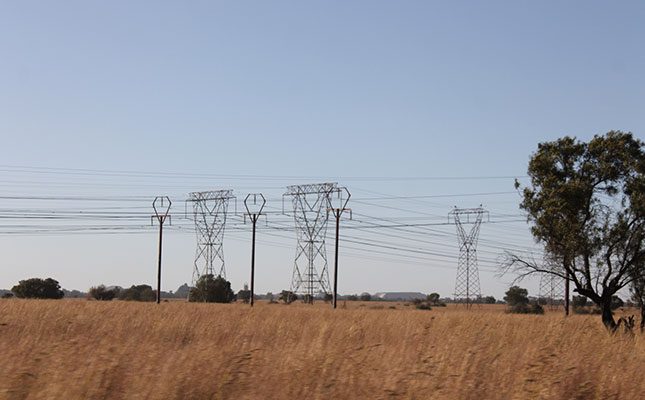
Photo: FW Archive
The ongoing rise in energy costs, load-shedding as well as environmental concerns associated with the use of coal-fired power stations are the driving forces for agricultural, industrial and commercial sectors to change how energy is consumed.
There is a growing interest in energy management, energy efficiency and energy-efficient technologies as a result of escalating energy crisis.
Considering the switch to solar energy? Read this first!
In order to deal with the current energy crisis, business at large is realising that energy, like any other resources or raw materials, can be managed.
This article focuses on recommending energy-efficient technologies and a way in which energy can be managed to reduce its operational cost to ease the financial burden on consumers – agricultural, industrial and commercial sectors.
Energy-Efficient Technologies
Businesses in the agricultural, industrial and commercial sectors use a variety of technologies, which have been developed over time to be energy efficient.
The use of energy-efficient technologies can result in significant cost savings. Some of the energy efficient technologies are discussed below:
- Variable speed drives (VSDs): These are designed to control the speed of a motor and work best in equipment where the load varies.
They respond to sensors and adjusts the speed of the motor to an optimum speed, thereby reducing or optimising the power usage.
- VSDs can be used in pumps, fans, lifts, conveyors and ventilation systems, compressors, cold and freezer rooms.
- Heat pumps: Heat pumps operate in a similar way to air conditioners or refrigerators. Heat is extracted from the surrounding air or water, then transferred to where it is used.
Heat pumps can be used to heat water and are far more energy-efficient than electric and gas boilers. - For every 1kWh of electricity used to run fans and compressors in a heat pump, more than 3kWh of energy can be transferred and used. They are environmentally friendly because they extract heat from the surroundings, which is available 24 hours a day.
- Solar geysers: Solar geysers can also be used to replace conventional electric and gas boilers. The benefits of using the solar geyser include reduced energy costs and greenhouse gases.
- The technology is available in either a flat plate collector (FPC) or evacuated tube collector (ETC).
- Solar geysers, such as FPC and ETC, are mostly deployed in residential areas.
However, they can be installed in industrial sectors to supply heat up to 125°C.
Thermal insulation is the reduction of heat transfer and can be achieved with suitable object shapes and materials. - Fire-retardant ceiling insulation, draught-proofing doors and windows, double-glazed windows, reflective roof coatings, insulating geysers (geyser blankets) and geyser hot water pipe insulation are some of the methods used for thermal insulation.
- Energy efficient equipment: Users must develop a habit of using energy-efficient technologies of motors, boilers, furnaces, industrial dryers, pumps, compressors, lighting, domestic appliances, and air conditioning systems.
For example, replacing an old air conditioner with an inverter-type air conditioner will save more energy.
READ Energy storage can enhance SA agriculture
This is because the inverter-type air conditioner has minimal power losses because the motor speed can be adjusted without turning the air conditioner off and on.
Lighting
Lighting consumes vast amounts of energy, however, a substantial amount of energy losses due to inefficiency and old lighting technologies can be mitigated by considering the following:
- Incandescent lamps can be replaced with compact fluorescent lamps or light-emitting diodes.
- T12 fluorescents can be replaced with T8 and T5 fluorescents, which are more energy-efficient
- Metal halides with a high power rating (400W) can be replaced by metal halides lamps of a lower power ratings, for example, 360W, 250W and 200W metal halides.
- High-intensity discharge lamps like halogen lamps can be replaced with metal halides or high-pressure sodium lamps.
- Apply de-lamping in highly-lit areas.
- Conventional high-intensity discharge lamps and fluorescent lamps in high-ceiling applications can be replaced with T-Bay lamps and induction lamps. Lamps such as induction lamps have long-life spans.
Energy-management practices
Apart from using energy-efficient technologies to reduce the energy bill, behaviour patterns can be changed to reduce the operational cost of using electricity.
These behaviour patterns are energy management practices that will cost zero to implement but can lead to significant energy savings of up to 10%.
There are claims that energy savings cannot be achieved without investing in retrofits or new energy-efficient technologies, however, this cannot be true.
Below is a list of management practices that can be used to dispel the claims, as well as to improve energy efficiency:
- Monitor energy in high energy consuming industrial processes and equipment to ensure optimum operating conditions.
- Where there are leaks and equipment failures, it must be reported timeously to prevent energy losses and the cost incurred.
- Where justifiable, working arrangement such as working from home and flexitime can be adopted.
- Unless there is justifiable reason, electrical loads like kitchen appliances, geysers, air conditioners and urns in the corporate kitchen should not be switched on during peak times. They cause spikes and consume excessive energy for no reason. Spikes can also attract penalties from Eskom.
- The passive use of standby mode for equipment should be avoided at all cost, as it does not imply that equipment or an appliance does not use energy when it is on standby mode.
- Agricultural, industrial, or commercial sectors can apply electricity load-shifting to distribute the energy consumption over extended period. It will help to stop the maximum demand penalties due to spikes.
- Avoid lighting offices overnight as this practice wastes a lot of energy.
- Switch off lights in unoccupied areas.
- Conduct awareness campaign and educate staff on energy efficiency and the benefits of it.
- Offices and shops can be comfortable for humans at temperatures between 18°C and 22°C. An air conditioner temperature of 22°C is comfortable for both summer and winter.
Management
It is recommended to conduct an energy assessment/audit. Energy assessment reports on information such as the energy consumption and efficiency of a building/agricultural building facilities.
It gives an indication of how, where and why energy is used. Managers can use the services of an energy services company to conduct energy audit.
Energy audit will be able to report on potential energy conservation measures and recommend on energy efficient technologies and any retrofits needed to optimise the energy usage.
For business which do not have enough resources to conduct a comprehensive energy audit, a walk-through energy audit will work.
This method includes walking around the building and making notes of areas which carry potential for energy saving. It also includes identifying areas where there is energy wastage.
Areas of interest to look for during the walk-through energy audit include heating, lighting, and office, factory and warehouse equipment.
Email Erence Manyako at [email protected]










